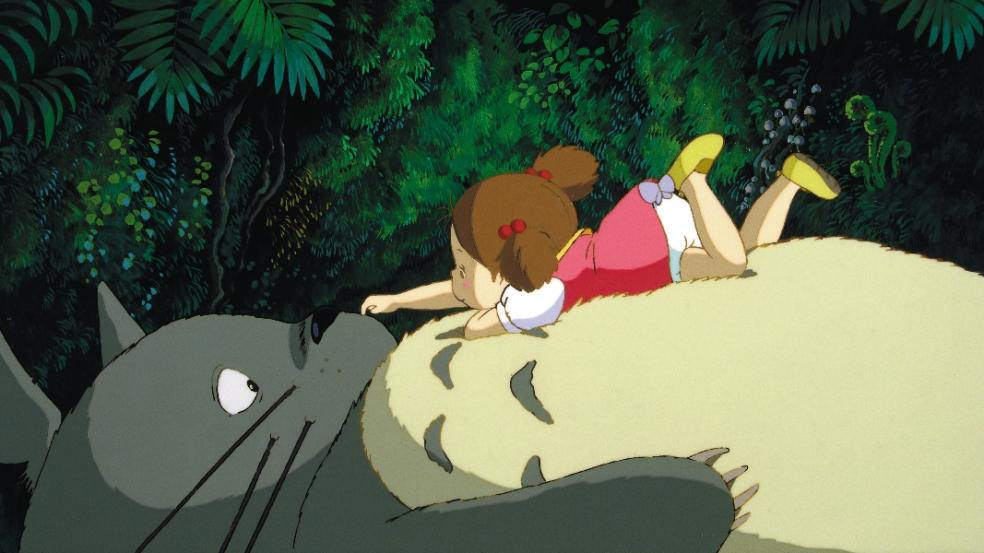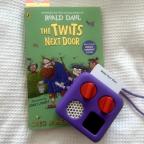
Young V&A unveils new details on first exhibition for children and families – Japan: Myths to Manga
- From Hokusai to Pokémon, Studio Ghibli, robots and beyond, the exhibition takes young visitors on an atmospheric and playful journey revealing the influence of folklore on Japan’s art and design.
- From manga-making to Taiko drumming and yōkai interactives, hands-on activities sit alongside exceptional objects and artwork from the 15th century to today, drawn from the V&A’s world-class collection and international loans, on display for the first time at Young V&A
Today, Young V&A announces new details about its first exhibition, Japan: Myths to Manga, as tickets go on sale. Opening Saturday 14 October 2023, Japan: Myths to Manga marks the beginning of a new programme of exhibitions dedicated to inspiring young minds and families through art, design, and performance.
Japan: Myths to Manga will take visitors on a journey through Japan, exploring how popular stories have shaped art, design, and technology across the centuries. Divided into four sections – Sky, Sea, Forest, and City – the exhibition brings together over 150 historic and contemporary objects.
From visual art, animation and origami to curious creatures, robots, fashion, film, and photography, Japan: Myths to Manga celebrates the spirit of playfulness and imagination that lies at the heart of Japanese culture. New acquisitions and rarely seen works from across the V&A’s collections will be brought together with important loans and reimagined for young people and their families, while an exciting selection of hands- on activities are set to spark creativity and imagination among visitors of all ages.
Japan has produced some of the world’s most exceptional art and design. Japan: Myths to Manga will feature works by celebrated 19th century Japanese artists, such as Hiroshige, Hokusai, Kunisada and Kuniyoshi alongside precious kimono and cute netsuke. The exhibition will explore how Pokémon, Studio Ghibli and the timeless yōkai manga of Shigeru Mizuki have drawn inspiration from Japan’s folktales to create some of popular culture’s most beloved characters. It will also show how these myths and the values they embody continue to inspire generations of artists and designers including Keita Miyazaki, Mariko Kusumoto, Noritaka Tatehana, and Yuken Teruya. A poignant installation of 1,000 paper cranes, a symbol of remembrance from the Hiroshima Peace Memorial Park in Japan will also be on display.
Katy Canales, Curator, Japan: Myths to Manga at Young V&A, said: “The same playfulness that fuels Japan’s creativity sits at the heart of Young V&A. For Japan: Myths to Manga, we’re bringing together the V&A’s incredible collections alongside amazing loans to explore the influence of Japan’s fascinating folktales to their fullest. You’ll discover what connects fuzzy Sylvanian Families and historic netsuke, how a seal-shaped robot meets the needs of modern living, and why catfish signal danger. You’ll get the chance to join in—whether it’s making your own manga or looking out for yōkai (spirits) prowling the city streets. Japan’s striking landscape and wealth of myths have sparked imaginative and innovative responses from artists and designers for centuries and we can’t wait for it to inspire our young visitors and their grown-ups too.”
Dr Helen Charman, Director of Learning, National Programmes and Young V&A, said: "We are thrilled to open the first in a dynamic series of exhibitions that will sit alongside the permanent gallery spaces at Young V&A. In celebrating the interplay of culture, imagination, and creativity, Japan: Myths to Manga reflects our commitment to engaging and inspiring young minds and families."
About the exhibition
Japan: Myths to Manga is divided into four thematic sections, taking visitors on an exhilarating journey through Japan and across the centuries. From the sky to the sea, into the forest and through the city, the exhibition explores how these distinct environments have inspired folklore, art, design, performance, and innovation.
The exhibition begins with the Sky, the setting for many of Japan’s most loved stories. Based around three popular myths, this section shows how artists through the ages have drawn inspiration from the sun, moon, and stars, and the stories that surround them.
Woodblock prints by 19th century artist Kunisada depict the story of Amaterasu, the Shintō sun goddess who hid in a cave, plunging the world into darkness and chaos. Amaterasu was lured out by drumming, and a set of playable Taiko Drums created by artist Noritaka Tatehana and drum making workshop Miyamoto Unosuke Shoten, will allow visitors to immerse themselves in the legend. The exhibition also explores the story celebrated at Japan’s Tanabata festival, in which a weaver princess and a cowherd fall in love but are separated by the Milky Way and only allowed to meet once a year on the seventh day of the seventh month. This interstellar romance is brought to life with exhibits including an intricate 18th century Star Globe (1784) and modern plushies of Sanrio’s much loved Little Twin Stars (2000). Visitors are also introduced to the selfless Moon Rabbit, busily making mochi rice cakes for all to enjoy, and invited to make their own origami rocket ship.
Epic tales set above and below the waves are explored in the exhibition’s second section, Sea. The Seven Gods of Fortune, revered as symbols of luck, prosperity, and happiness, are shown by artist Hiroshige arriving in their treasure ship (1850) while a Fisherman’s Festival Robe (1900-1930) represents their wishes and thanks for bountiful catches.
The dangers of the sea are represented in some of Japan’s most famous artworks, from Hokusai’s Great Wave (1831) to the Studio Ghibli film Ponyo (2008), the story of a goldfish princess who longs to be human. Magical journeys between worlds are also the subject of the Tale of Urashima Tarō, where a kindly fisherman visits an undersea palace only to return and find that centuries have passed. Pokémon’s Whiscash, is based on the mythical namazu, a giant catfish that, left unrestrained, can cause earthquakes. This legend is so deeply woven into popular consciousness that the namazu is now used as a mascot for earthquake early warning systems. Inspired to create their own stories, visitors will be guided on how to draw their own manga, which they can add to a growing installation within the space.
The third section delves into Japan’s ancient Forest and the mythical stories of shapeshifting creatures and heroes with superhuman qualities it has inspired. The Tale of The Princess Kaguya, about a girl found in a bamboo stalk by a friendly woodcutter who raises her as his own, is represented through Studio Ghibli’s 2013 cinematic retelling. Fuzzy Sylvanian Families (1985-1995) are matched with historic netsuke to reflect the continuing appeal of forest-dwelling critters and their stories. This section also includes The Tale of Momotarō ̄, a boy born from a peach who becomes a hero, and The Tongue Cut Sparrow, where a man's care of a bird shows the rewards of kindness and the perils of jealousy and greed. Audio excerpts, books, and screenings will be available for visitors to explore, as will an entrancing stage model for the Royal Shakespeare Company’s production of My Neighbour Totoro, which has been specially created for the exhibition.
The final section propels visitors into the City, introducing the culture of "kawaii" (cuteness) and the global phenomena that are manga, anime, and gaming technology. Visitors can interact with life-size yōkai characters, shapeshifting spirits from the story of the Night Parade of 100 Demons. The story of the Wonderful Tea-Kettle, in which a poor priest's purchase of an old kettle leads to a surprising encounter with a shapeshifting raccoon dog, is retold in the popular Japanese Fairy Tale Series (early 20th century) and an elegantly playful sword guard (1800-50).
Objects including Tamagotchi (1997), a Hello Kitty rice cooker (2014), and a manga inspired Comme des Garçons coat (2018), will be on display, alongside Transformers (1985-86), futuristic robots and photography. The importance of respecting the world around us is highlighted in the eye-catching sculpture Double Spiral (2015) by contemporary artist Keita Miyazaki, made from disused car parts and colourful paper, and an outfit curated by 12-year-old fashion stylist, Coco Pink Princess.
Japan: Myths to Manga is supported by Toshiba, with further support from Cockayne Grants for the Arts, a donor advised fund held at The London Community Foundation.
Japan: Myths to Manga
14 October 2023 – 11 August 2024
Supported by Toshiba
With further support from Cockayne Grants for the Arts, a donor advised fund held at The London Community Foundation
vam.ac.uk/young | @young_vam














